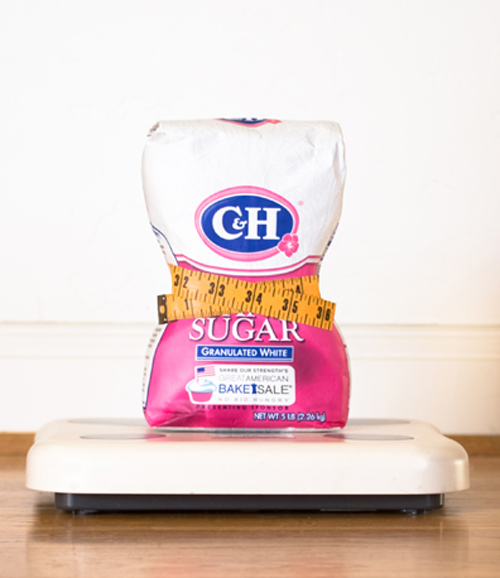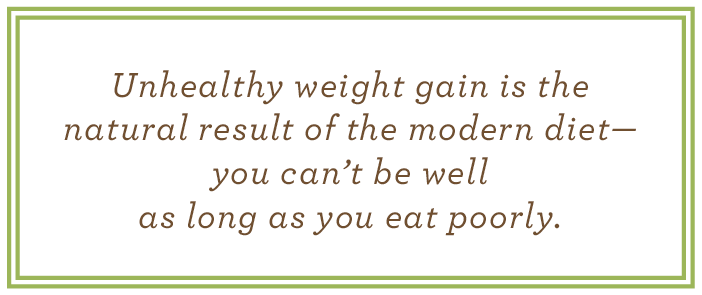Don't Forget Fiber

The quick answer: Over the last century, dietary sugar consumption rose as fiber intake declined. To reduce your risk of overweight and disease, eat more natural fiber than sugar.
______________________________________________________________________________________________
The 20th Century was a dietary disaster—we’ve said it before, but repetition is a principle of learning. The industrialization of our food is presented in the graph above that compares traditional diets (Developing Countries) to the modern Western diet. For the thoughtful person, there is much food wisdom in this chart.
The diet of the Western countries makes a good business—not just for the food processors that comprise Food Inc. but also for the medical establishment that treats the resulting chronic diseases. A premise of this blog is that as we eat and live better, we will have less need of doctors, drugs, and hospitals. We’ll still die, and perhaps from those same chronic diseases, but we’ll have more years of good health to enjoy, and less years of bad health to endure. (A younger person diagnosed with cancer, for example, will linger longer than an older less vigorous person with the same disease. My Father died of cancer in his 90th year, but it was just a week from diagnosis to his passing.)
Two metrics define the 20th Century damage to our dietary: the year-by-year rise of sugar consumption, and the corresponding decline in fiber intake. The third Healthy Change established the rule that food products must be made of whole grains and contain more natural fiber than sugar. Prior posts addressed sugar; this post is about fiber.
The original weight-loss marvel:
Fiber is essentially the structural material of plant cells. Whether soluble or insoluble (it doesn’t matter which, we need both), fiber is the original weight loss marvel: it provides lasting fullness yet has zero calories. In addition, fiber optimizes the rate of digestion, slowing the rate that starch enters the blood as glucose (thus softening the swings in blood sugar and insulin that cause type 2 diabetes and fat storage) while speeding the passage of food through the G.I. tract (which reduces the risk of colon cancer).
Dr. Denis Burkitt
In the course of the year we highlight twelve heroes of better nutrition, including Dr. Denis Burkitt. Dr. Burkitt served in Africa as a missionary surgeon and his keen study of disease patterns led to the ‘80s bestseller, Don’t Forget Fibre in Your Diet. (No fiber isn’t misspelled; Burkitt was English.) The informative graph displayed above is from his book. Burkitt single-handedly brought the removal of fiber by the industrialization of food to the public consciousness. From his research—he painstakingly established a large network among hospitals to monitor the incidence of diseases—Burkitt linked the disappearance of dietary fiber with modern diseases like constipation (the first sign of fiber deficiency), type 2 diabetes, heart disease, gallstones, and breast and colon cancers.
Fiber deficiency diseases:
Over the last century fiber was steadily removed from our diet by the rise of processed foods, and the chronic diseases noted above. Another result—I’ll try to be delicate here—was increased constipation. (Fiber deficiency isn’t the only cause; other factors include too little exercise or fluid intake, or a diet high in dairy products.) Most people don’t realize the danger of constipation-caused straining during bowel movements:
- Straining causes hiatal hernias, a condition where the upper portion of the stomach is forced into the chest cavity, which causes the leakage of stomach acid and heartburn. Rather than diet reform, people take antacids (Alka-Seltzer, Milk of Magnesia, Pepto-Bismol); more recently drugs to reduce acid production (Pepcid, Tagamet, Zantac) have been heavily advertised.
- Straining can force partially digested food into the appendix where it can lodge, become infected, and lead to appendicitis. Appendicitis is the most common emergency surgery of the stomach.
- Straining can cause bulges or aneurysms in the large colon and the serious disease of diverticulitis.
- Finally, straining is associated with the painful problem of hemorrhoids, which require no explanation.
Foods rich in fiber:
The humble legume—whether pea, lentil, or bean—provides more fiber than any other food. See here for the legumes highest in fiber.
Besides legumes, foods rich in fiber include (for details go here):
- Whole grains (a 2011 study showed whole grains to be significantly protective of death from all causes),
- Nuts and seeds,
- Fruits, especially berries,
- Vegetables, particularly root vegetables such as yams.

Budget Wisdom:
It’s well known that legumes provide the best nutrition value for your food dollar. What’s surprising is how little shelf space markets dedicate to dried beans, the very best food value. Selling for around a dollar per pound, you can feed the family for pennies per serving. If you’re serious about food value, this week’s Healthy Change is a natural.
Please comment: Share the ways you include legumes in your family’s diet.
Need a reminder? Download our Healthy Change reminder card. Print and fold, then place in your kitchen or on your bathroom mirror to help you remember the Healthy Change of the week.
Graph from the book Don't Forget Fiber in Your Diet by Denis Burkitt
 Monday, July 25, 2011 at 12:47PM | by
Monday, July 25, 2011 at 12:47PM | by  Skip Hellewell |
Skip Hellewell |  11 Comments |
11 Comments |  3 References | | in
3 References | | in  cancer,
cancer,  fiber,
fiber,  healthy change,
healthy change,  overweight |
overweight |  Email Article
Email Article 


